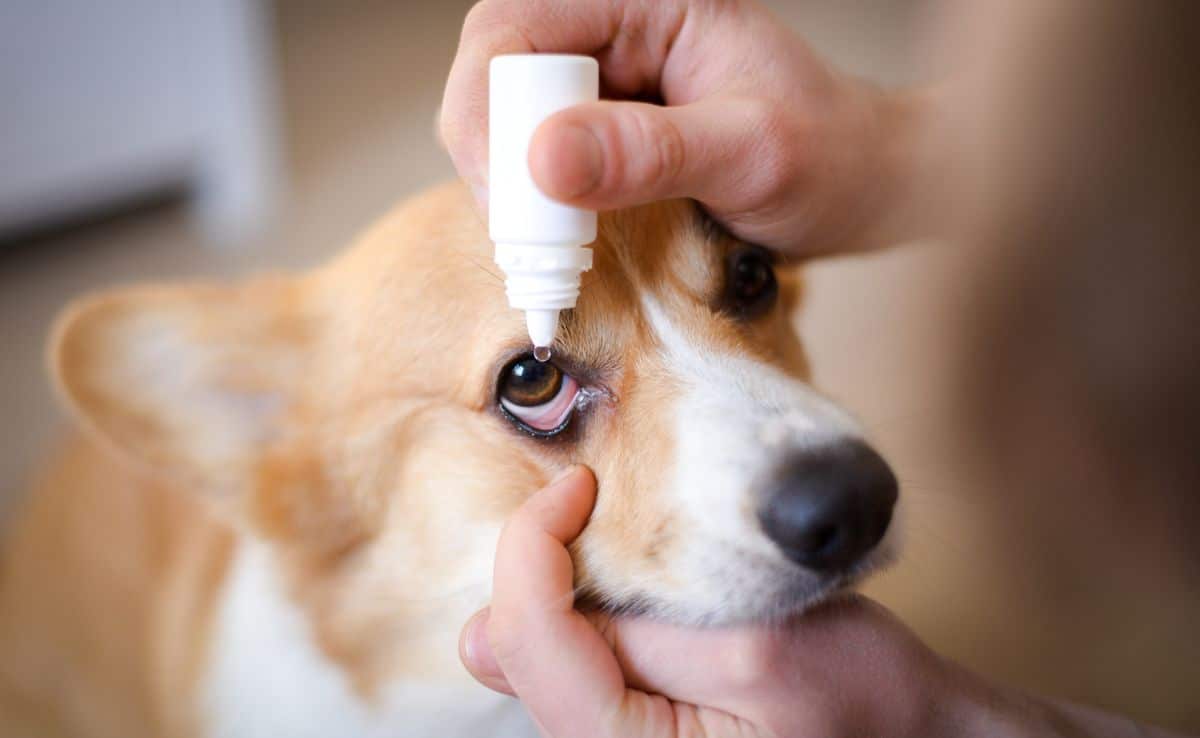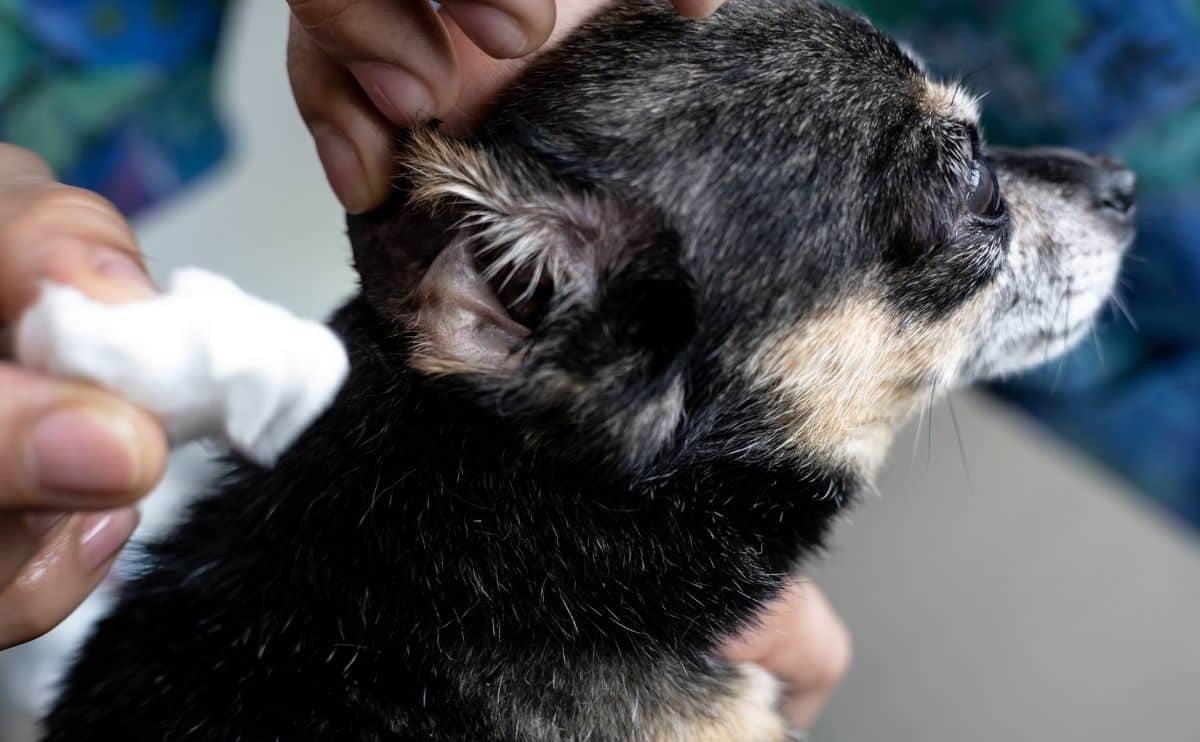What Are The Benefits Of Spaying & Neutering Your Dog?
When you purchase through links on our site, we may earn a commission. Here’s how it works.
The topic of spaying and neutering is often brought up by dog owners. However, it’s a subject that should be addressed by all pet owners. There are many benefits of spaying and neutering, including improved health outlook, enhanced temperament, a declining homeless pet population, and a reduction in the expense associated with breeding.
Table of Contents
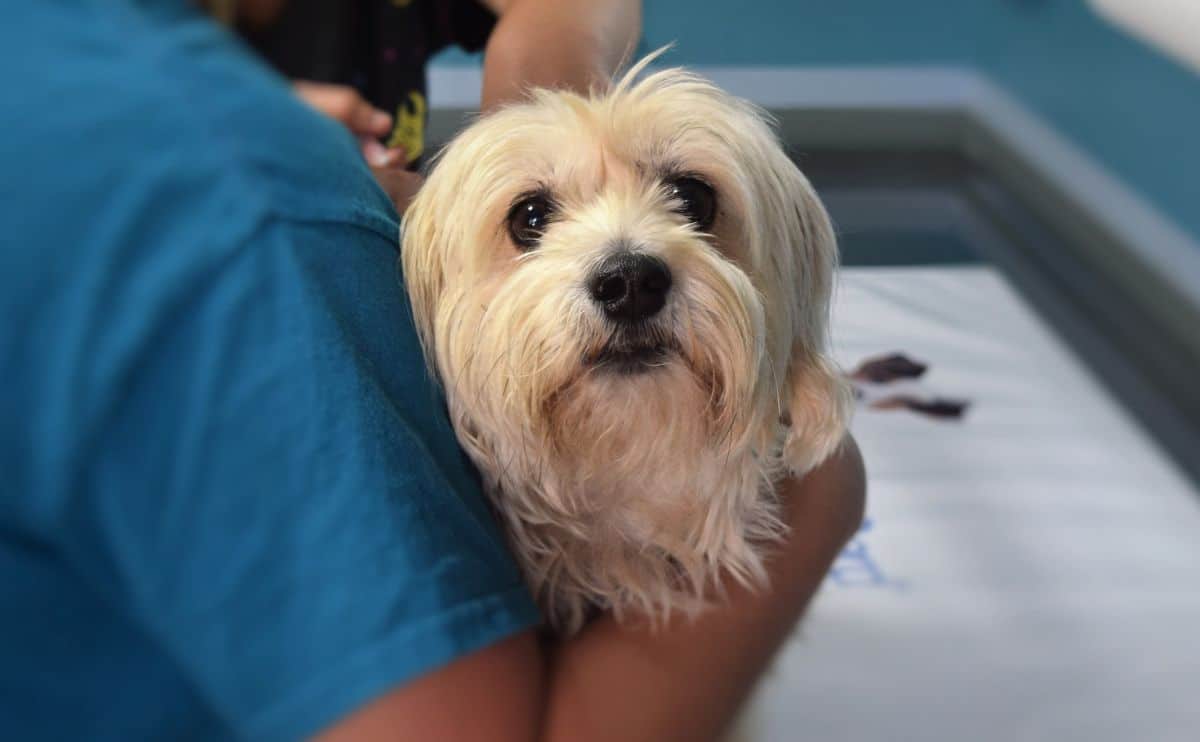
What Is Spaying?
Spaying is the practice of sterilizing female animals by removing the ovaries and uterus. A spay is also called an ovariohysterectomy.
A female dog who’s pregnant or in heat can be spayed. Spaying during pregnancy will terminate the pregnancy and can be performed until just a few days before delivery, although this is not recommended. The procedure is invasive and involves an abdominal incision. It may take some time for a spayed female to recover, but she is sterile immediately following her surgery.
What Is Neutering?
Neutering (also referred to as orchiectomy or castration) is the practice of sterilizing male animals by removing their testicles. The penis is not operated on during this procedure, and the outer scrotal sac is left in place (but eventually shrinks back into the skin, especially in younger dogs).
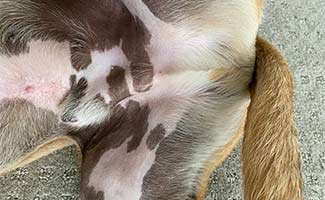
A neutered male isn’t sterile immediately following his surgery. On average, it can take up to six weeks for a neutered male to be considered sterile. It’s important to keep a newly neutered male away from any females in heat for about six weeks to ensure that pregnancy will not result from the encounter.
Neuter is less invasive than a spay, so male dogs generally recover quickly following the procedure.
Cryptorchidism In Male Dogs
Most male dogs are born with two testicles that descend from their stomachs, through the inguinal canal, and into the dog’s scrotal sacs. The testicles should be visible and dropped in a male puppy by two months of age, but this descent can sometimes take up to six months. When one or both testicles fail to descend from the abdomen into the scrotal sacs, a male can have an increase in health risks, including testicular cancer and infertility.
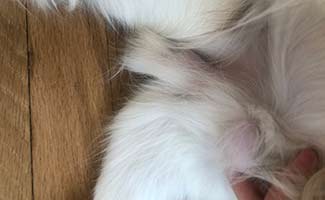
This condition of the testicles’ failure to descend, known as cryptorchidism, occurs in around 1-3% of male dogs and is typically caused by an inherited trait. Dogs with cryptorchidism should have their neutering scheduled sooner than later to reduce the chances of complications, like the testicles getting twisted in the spermatic cord. Your vet may perform an ultrasound to determine the exact location of the testicle before surgery. Neutering dogs with cryptorchidism is essential to ensure they don’t continue to pass down the trait to other puppies.
When Should I Get My Dog Fixed?
Many shelters routinely sterilize puppies and dogs to help control overpopulation. With privately-owned dogs in secure homes, here are the most recent recommendations:1
- Small-breed dogs (under 45 pounds projected adult body weight) should be neutered at six months of age or spayed before their first heat, typically at five or six months.
- Large-breed dogs (over 45 pounds projected adult body weight) should be neutered after growth stops, usually between 9 and 15 months of age. When to spay a large-breed dog depends on several factors. The recommended window is anywhere between 5 and 15 months, depending on your dog’s disease risk and lifestyle. Consult with your veterinarian to help narrow down the window.
If you’ve adopted an older dog who hasn’t been sterilized, spaying and neutering are generally considered safe as long as they’re in good health.
Risks Of Neutering Or Spaying Too Soon
There have been growing research and health concerns about getting certain dog breeds fixed too early. Particularly larger breeds like Golden Retrievers, Labrador Retrievers, and German Shepherds have elevated risks of developing joint disorders, orthopedic injuries, obesity, and certain cancers.
While there is no conclusive data, the concern for spaying or neutering certain dog breeds too soon could stunt their growth. If you’re overly concerned about this happening to your pup, you might consider talking to your vet about checking their growth plates via X-ray to see if they have fully closed before going under the knife.
How Much Does Spaying & Neutering Cost?
The cost of spaying and neutering depends on a wide range of factors, including the animal’s overall health, size and weight, geographic location, and whether the surgery is spaying or neutering. A lot of pet owners choose to have their regular veterinarian perform their pet’s spaying or neutering.
The price range for spaying and neutering from a regular veterinarian ranges so significantly that there’s no way to portray it accurately. Many vets hold clinics to provide affordable spaying and neutering for $40 to $150 per pet. You’ll also likely find affordable spaying and neutering at your local animal shelter.
One other option is to enroll in a pet wellness plan, which may cover a portion of the procedure done by your veterinarian. It can also be used for other preventative vet visits, vaccines, treatments, medications, and more.
Is A Private Practice Vet Worth The Cost Over A More Affordable Option?
The first priority of pet owners should be providing a safe spaying and neutering experience for their pets. This type of experience is provided by all licensed veterinarians regardless of whether they work at a private practice clinic, a low-cost clinic, or at the ASPCA or Humane Society.
With that said, there are benefits to going with a private veterinary practice for your dog’s spaying or neutering. Using a private practice vet will allow you to build a relationship with your vet with whom you and your dog will have a lifelong relationship.
What Are The Benefits Of Spaying Or Neutering Pets?
There are many benefits of neutering a dog that pet parents should be aware of. Here are just some of the benefits of spaying a dog:
1. Fewer Homeless Pets
Local shelters are often overpopulated. If all pet owners spayed and neutered their dogs, their local animal shelters would experience a reduction in their pet populations. This reduction would result in fewer animals living on the streets and being euthanized and increases the available space in shelters for animals that may otherwise be thrust into homelessness.
2. Medical Advantages
Neutering male dogs eliminates the risk of testicular cancer and reduces prostate problems. Spayed females have a reduced risk for uterine infections and mammary and breast tumors.1, 2
3. Behavior Improvements
One of the most obvious differences between a spayed or neutered pet and an intact pet is the need to “roam.” Male pets will go to great lengths to get to a female that’s in heat. This includes tunneling under fences and leaping over gates. The scent of a female in heat can carry for considerable distances making it extremely difficult to contain a male pet.
4. Does Neutering Calm A Dog Down?
You might be wondering, “does neutering help with aggression in male dogs?” Males, in particular, can become highly dominant or bullheaded as a result of surges in testosterone. These pets can be challenging to control and train.
Hormones also play a role in instincts, such as marking behavior and shows of dominance and aggression. The majority of dog bites involve dogs that haven’t been fixed.3
While neutering may reduce these behaviors, a recent report from Frontiers in Veterinary Science states that gonadectomy plays a minimal role in dog aggression.8 Further, because there are so many factors that can increase aggression in dogs, it’s difficult to prove that neutering alone reduces these behaviors.
Will Spaying Calm A Female Dog?
Will spaying a dog help with aggression or does spaying clam a dog down in general? Like the effect of hormones that neutering has on male pets, the same will be true for spaying a girl dog. She’ll feel less irritable or nervous during ovulation.
5. Less Mess
Mating is a messy business. Not only do males release ejaculate, but females experience menstruation.
In dogs, the heat cycle during which the female bleeds can begin as early as five months old. This cycle occurs approximately twice a year and lasts for three weeks. During heat cycles, females need to wear protective garments that must be changed frequently to prevent blood on furniture and around the home.
Females in heat must be kept away from all males. This means the female must not be allowed unsupervised access to anywhere she could potentially be mounted by a male. The act of mating can occur in seconds and result in an unwanted pregnancy.
6. Cost Of Pregnancy
The cost of both pregnancy and raising puppies is much greater than some might think. The pregnant female requires supplementation with vitamins, higher-quality dog food, and regular veterinarian checkups.
The birthing process is another potentially expensive experience. Several conditions can arise that require veterinary intervention, which can be costly. It’s also possible for the birthing female to experience complications that could be fatal.
Assuming the mother and babies make it out of delivery, there is then the added cost of raising young. The nursing mother requires premium food, and her babies require both regular medical checkups and preventative medication.
After raising babies to approximately eight weeks, they must all be found safe and responsible homes. As a responsible pet owner, it’s up to you to raise the young until such a home can be found. Many pet owners shirk this responsibility, and if a home cannot be found for offspring, puppies are dumped in a local shelter, feeding a vicious cycle.
Benefits Of Spaying & Neutering Dogs (Infographic)
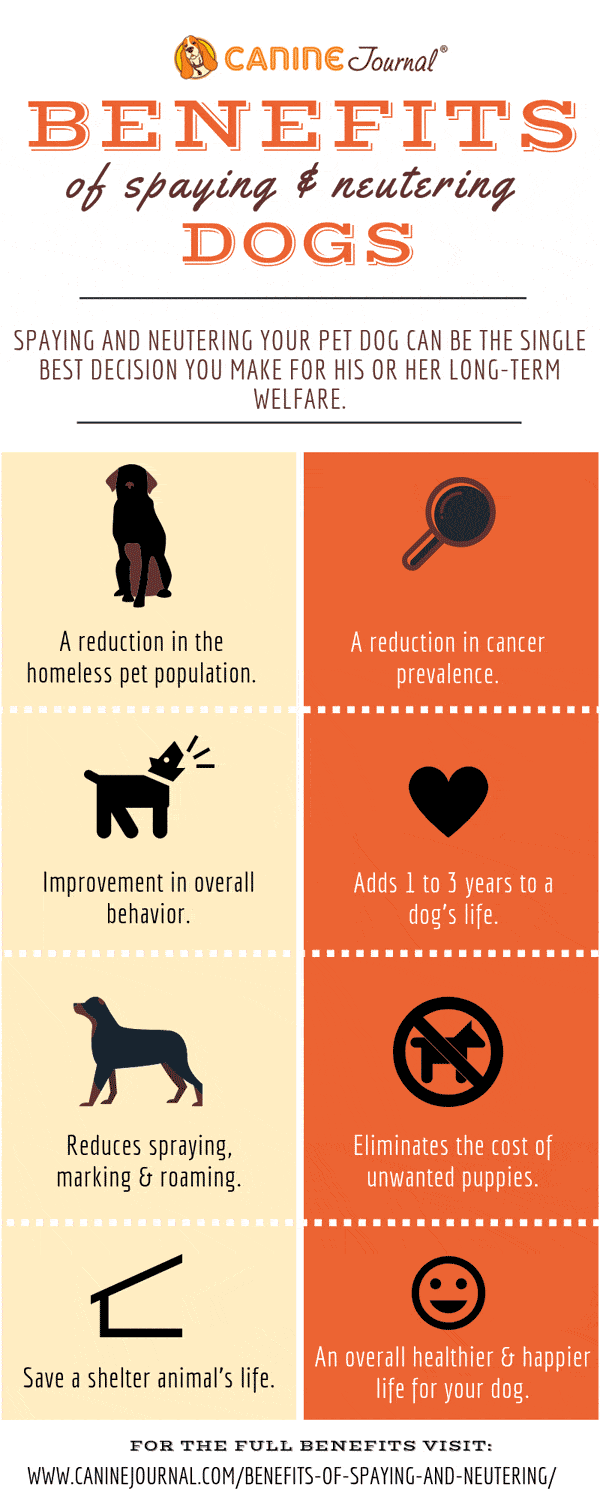
17 Excuses For Not Spaying And Neutering
Pet owners have many excuses for why they don’t want to “desex” their animals.
- I want another dog just like Fido – We aren’t duplicates of our parents, and the same goes for our dogs. Each living thing is unique.
- Spaying and neutering will make my pet fat – Fixing your dog can reduce their level of activity and cause hormonal changes, but poor diet and exercise are more likely culprits of their weight problem.
- We could become breeders and make money – Breeding is done for the love of the breed and isn’t always a profitable business. There are many fees associated with breeding that cause breeders to lose money. Breeders who are solely focused on making money may cut corners and endanger the health and well-being of the mothers and pups.
- My pet will change after they get spayed or neutered – Pets typically change for the better. For example, male dogs are less likely to roam.
- My pet deserves the chance to be a parent – We tend to put human emotions and desires on our animals. Being a parent as a human is different from being a parent as an animal. Animals care for their young for a set period, and it doesn’t consist of enrichment activities as it does for humans.
- We always find homes for our puppies – The people who take in the puppies you have are people who could have saved a dog from a local shelter or rescue group. This means there’s one less home and one less second chance for a dog in need.
- My dog is always contained – Dogs can escape backyards, and other dogs can break into your backyard. Dogs get lost and run away every day.
- It’s not natural to spay or neuter dogs – It’s also unnatural to own dogs as possessions, but we domesticated them.
- I couldn’t look my dog in the eye if I cut off his testicles – Could you look him in the eye if he developed testicular cancer that you could’ve prevented?
- My dog will feel less like a man – Dogs don’t have a concept of sexual identity. Neutering them will not cause an identity crisis for them.
- It’s healthier for female dogs to have a litter before being spayed – There is no medical research supporting this.
- Spaying or neutering is too expensive – Many vet clinics and shelters offer discount spay and neuter services to help families with financial constraints to provide for their pets.
- My children should experience the miracle of birth – There are other ways to educate your children than witnessing it firsthand. Show them a video, share an article with them, etc.
- My dog is purebred – If you aren’t a certified breeder, you have no place to breed your dog.
- Spaying and neutering will make my dog less protective – A dog will not lose their natural instinct to protect their family.
- My dog should experience a heat cycle before being spayed – Spaying your dog before her first heat greatly reduces the risk of mammary tumors.4
- Risks from the procedure – Complications and death from most neuter and spay procedures are rare and usually minor.
4 Euthanasia Statistics
These statistics about euthanasia in animal shelters and spaying/neutering are shocking.
- Every year approximately 1.5 million shelter animals are euthanized (a decrease from 2.6 million in 2011).5
- Only 10% of animals that find their way to local shelters have been spayed or neutered.6
- As of 2019-2020, 78% of owned dogs (87% of cats) are spayed or neutered.5
- Thirty-one states and Washington D.C. require dogs to be spayed or neutered before adoption from shelters.7
What The Process Is Like For Your Dog: 5 Steps
Here’s a glimpse into the procedure based on vet knowledge and research.
- The dog is given pain medication to minimize pain after waking up.
- The dog is placed under general anesthesia.
- The vet administers an anesthetic drug through a catheter placed into one of the dog’s leg veins. All the dog experiences after this are sleep and no pain, much like a human in surgery.
- A tube is fed into the dog’s airway. The dog’s breathing is ventilated during the procedure, and the heart rate is monitored.
- Intravenous fluids are also given.
This is where it begins to vary for males and females.
Your Male Dog’s Neutering Experience
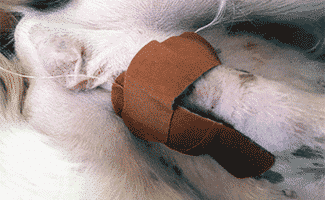
The fur in front of the scrotum is clipped or shaved, and the skin is sterilized using a topical antiseptic wash. A small incision is made in that location using sterile surgical tools.
For puppies with both testicles descended, the next step is the clipping of the vas deferens (transports sperm to the urethra) and removing the testicles, which takes 10 to 20 minutes. For dogs with cryptorchidism, the procedure may take a bit longer as it presents an extra step to remove a testicle from the abdomen (or elsewhere it’s “hanging out”).
The vas deferens and the blood supply to the area is tied off, and the small incision is closed with surgical glue, staples, or in rare cases, sutures.
Post-Neuter Care
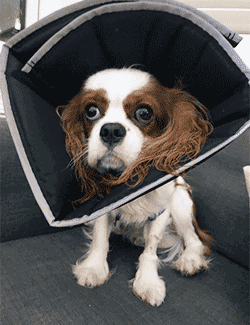
The dog wakes up and is often able to go home that day. He may be sore, so your vet will prescribe minor pain medication. Your vet will also give you instructions on how to check for infection.
Dogs can eat and drink normally when they get home but require gentle, monitored walking and should refrain from jogging or rough playing with other dogs or people who might accidentally worsen the surgery wound. Always follow your veterinarian’s instructions for post-surgery care so that your dog makes a full and safe recovery.
If your dog looks like he’s going to lick his stitches, a cone or Elizabethan Collar may be placed around his neck until the wound heals. Although this might be annoying, he mustn’t aggravate the surgical incision until after the stitches are removed, or the wound is fully closed up. The wound should be healed after about one week, and the dog can resume his usual antics.
Your Female Dog’s Spay Experience
The skin on the abdomen is shaved or clipped and treated with an antiseptic solution. A small abdominal incision is made, and the uterus and ovaries are removed. The blood supply of the uterus is clamped during surgery to prevent bleeding.
The procedure may take as little as 20 minutes but could last up to 90 minutes, depending on factors like age and size. The wound is sealed with surgical glue, staples, or sutures. Abdominal incisions go through several layers of skin, so your vet will close the incision in two to three layers.
If the surgery is performed during estrus (while the dog is in heat), expect it to take longer, require more supplies, and be a little riskier. The medication used before, during, and after surgery may vary as well. These adjustments often lead to a more expensive vet bill.
Post-Spay Care
A spay is more invasive than a neuter, so it can take a bit longer for dogs to heal after being spayed. The dog wakes up and will not be sore immediately. Vets usually prescribe minor pain medication for the days after the surgery, and once again, you’re required to check for infection. The dog can eat a light meal when she returns home and will probably regain her normal appetite by the next day. Fresh water should always be available for the dog to drink.
Nausea is a common symptom that may make her not want to eat. If your dog’s appetite doesn’t seem to be returning to normal, talk with your vet about possibly trying a home remedy medication to stimulate appetite. The vet will instruct you on how to feed and water her before then. Since female spays are more likely to have sutures or staples, those require a return visit to the vet’s office within 10 to 14 days for removal.
Spaying can slow down a female dog’s metabolism, so a spayed dog may require lower-calorie food. Like with a neuter, the first week after a return home will be especially gentle for your dog, but after a week, she can resume all her usual playful activities.
Can I Use A Discount Spay & Neuter Clinic?
Most communities offer discounted spay and neuter clinics to help pet owners afford this important procedure. You can easily search for a list of low-cost spay and neuter clinics near you on the North Shore Animal League America website.
Most dog owners become nervous when they hear the term “discount” pertaining to something like surgery for their furry family member. In most instances, these spay and neuter clinics are sponsored or held at local ASPCA shelters and Humane Societies. These agencies provide this discount as a service to the community and reduce pet overpopulation resulting from unspayed and unneutered animals.
How Do Clinics Work?
Generally, these services will ask pet owners to call or submit forms online to request spay and neuter appointments.
Who Performs Discount Surgeries?
Spay and neuter clinics employ only licensed veterinarians because only licensed veterinarians are allowed to perform these surgeries.
What Is The Cost Of Discounted Surgery?
Discount spay and neuter clinics vary in cost based on a variety of factors. The base fee for sterilization surgery is determined by the area in which the client lives. However you can often get this done for less than $100, but it depends on the dog’s weight, whether a female is in heat or pregnant, or obese.
What’s Included?
This can vary depending on the clinic. However, it may include the surgery, a 1-year rabies vaccination, distemper, and any other core vaccinations, and a pain relief injection for the surgical procedure.
Add-on services are also offered based on the individual needs of a client, and these can include: additional pain relief medication for recovery, microchiping, heartworm testing, heartworm prevention, flea, and tick prevention, canine kennel cough vaccination, cone e-collars, and cardboard carriers.
Importance Of Supporting Clinics
Even if you choose not to utilize spay and neuter clinics, you can still support local clinics by donating supplies or money. These donations go into allowing clinics to provide discounted spays and neuters to prevent pet overpopulation.
The higher the population of homeless pets, the larger the stray pet population, increasing the risk of disease among feral animals and the financial strain put on locally-owned animal shelters and animal control centers.
If you have a dog that’s not spayed or neutered yet, you may want to consider getting a pet wellness plan. Many wellness plans cover a portion of the expense associated with “fixing” a dog in addition to many other things, including vaccinations, microchipping, annual exams, teeth cleanings, flea, tick, and heartworm treatments, and more.
Sources: [1] American Animal Hospital Association, [2] ASPCA, [3] CDC, [4] Woodland Hills Clinic, [5] Humane Society, [6] Petfinder, [7] AVMA, [8] Frontiers In Veterinary Science

